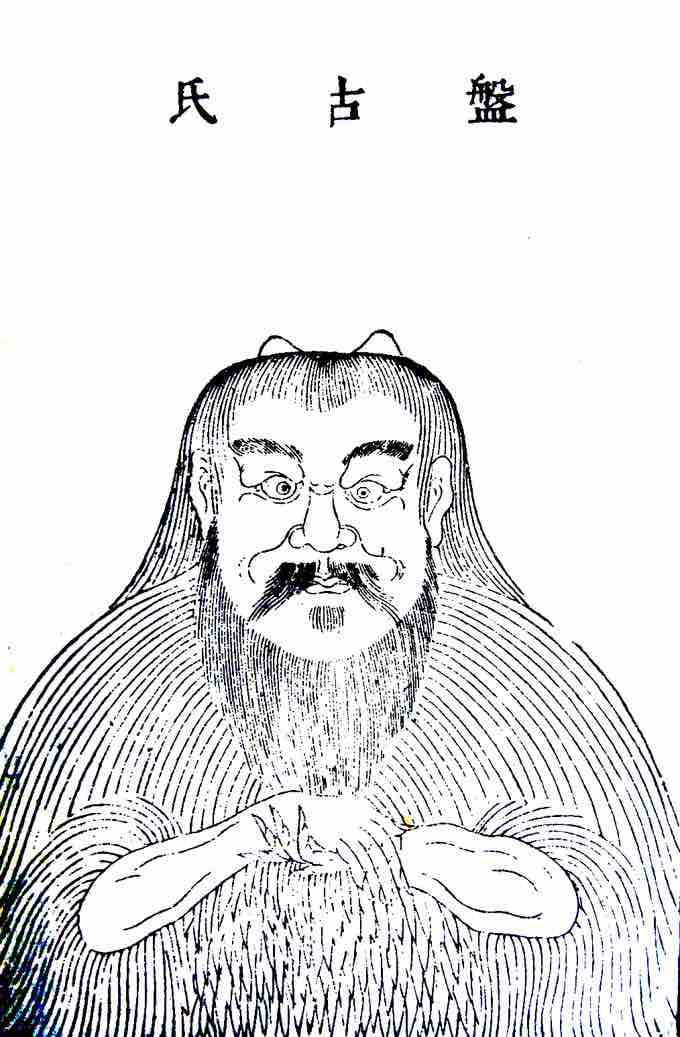History as Told by Archaeological Evidence
As in Mesopotamia, Egypt, and the Indus River valley, civilization in China developed around a great river. The Yellow River and the Huai and Yangtze Rivers, created fertile land, ripe for experimentation with agriculture. By around 4000 BCE, villages began to appear in these areas. The Neolithic Chinese cultivated a number of crops; the most important was a grain called millet. They also domesticated animals, such as pigs, dogs, and chickens. Silk production, through the domestication of silkworms, also likely began in this early period.
These villages influenced each other more and more over time, and by 2000 BCE a unified Chinese culture began to develop. There is also evidence of urbanism and the use of early writing d this time. These phenomena took place in China about 1000 years later than in Mesopotamia, Egypt, and the Indus River valley.

Pangu
Portrait of Pangu, the creator of the universe according to Chinese mythology. This portrait is from Sancai Tuhui, a Chinese encyclopedia published in 1609, during the Ming Dynasty.
History as Told by Chinese Legend
Chinese mythology tells a different story of the beginning of civilization. It holds that the universe was created by Pangu, the first living being. After his death, Pangu's left eye became the sun and his right eye became the moon. The Three Sovereigns and the Five Emperors, a series of legendary sage emperors and heroes, helped create man. These legendary rulers taught the ancient Chinese to speak, use fire, build houses, farm, and make clothing. Fuxi and his wife, Nüwa, were credited with introducing domesticated animals and creating the basic social structure of family life. Shennong was a divine farmer who gave the people knowledge of agriculture.
The existence of these emperors occurred before written Chinese history, and so the dates of reign are uncertain. The Five Emperors began with Huangdi, or the Yellow Emperor, whose reign is believed to be from 2698-2599 BCE. He was considered the founding ancestor of the Han Chinese ethnic group, and is credited with the invention of Chinese characters, silk, and traditional Chinese medicine.
The Yellow Emperor, or Huangdi.
Portrait of the first of the Five Emperors, who was considered the original ancestor for Han Chinese.
Next came Zhuanxu, who was credited with the invention of the Chinese calendar and the introduction of religion and astrology. Little is known about Emperor Ku's reign, believed to be from 2412-2343 BCE. Emperor Yao, whose reign was from 2317-2234 BCE, was credited with being a role model in dignity and diligence to future emperors, and was the inventor of the game "weiqi" (also known as "Go"). The last was Emperor Shun, whose reign was from 2233-2205 BCE, was known for his devotion. He left his throne to Yu the Great, who founded the Xia dynasty, and instituted the practice of passing rulership to a son. While these events are mythological, at their root there may be ancient memories of very early kings and rulers who emerged among the prehistoric Chinese, similar to the tales of Gilgamesh in Mesopotamia.